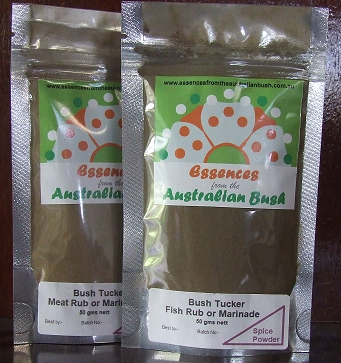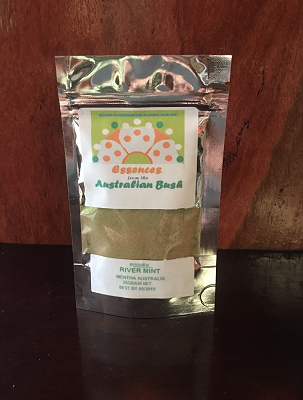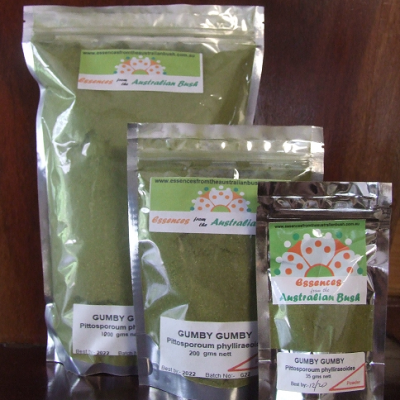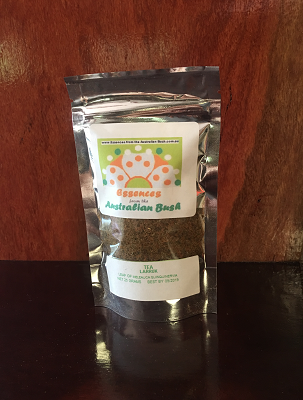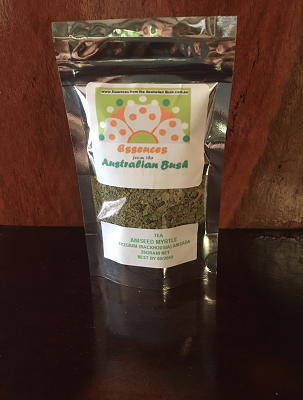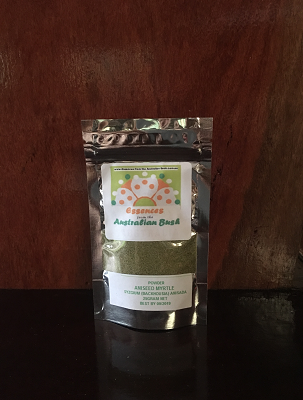NIAOULI ESSENTIAL OIL
SAFETY DATA SHEET (SDS)
- IDENTIFICATION OF THE SUBSTANCE/PREPARATION & THE COMPANY/UNDERTAKING
| 1.1 | Product Identifier | ||||||
| Product Name | Niaouli Oil | ||||||
| Biological Definition | The volatile oil obtained from the leaves of Melaleuca viridiflora, quinquenervia Myrtaceae | ||||||
| INCI Name | Melaleuca quinquenervia Leaf Oil | ||||||
| Synonyms & Trade Names | – | ||||||
| CAS-No | 8014-68-8 / 132940-73-9 | EC No. | 310-217-5 | EINECS No. | 310-217-5 | ||
| 1.2 | Relative identified uses of the substance or mixture and uses advised against | ||||||
| No additional data available. | |||||||
| 1.3 | Details of the supplier of the safety data sheet | ||||||
| Essences of the Australian Bush 94 Walkers Point Road, Maryborough, Queensland, Australia. | |||||||
| 1.4 | Emergency Tel. No. | 000 | |||||
- HAZARDS IDENTIFICATION
| 2.1 | Classification of the substance or mixture | ||
| The Full Text for all Hazard Statements are Displayed in Section 16. | |||
| Classification (EC 1272/2008) | |||
| Flammable liquid, Category 3 (Flam. Liq. 3, H226).
Skin irritation, Category 2 (Skin Irrit. 2, H315). Skin sensitisation, Category 1 (Skin Sens. 1, H317). Aspiration hazard, Category 1 (Asp. Tox. 1, H304). |
|||
| 2.2 | Label Elements | ||
| Label in accordance with (EC) No 1272/2008 | |||
|
|
GHS08 GHS09 GHS07 GHS02
|
||
| Signal Word | Danger | ||
| Contains | 1,8-Cineole, Alpha-terpineol, Pinenes, (R)-P-Mentha-1,8-Diene, Para-Cymene | ||
| Hazard Statements | |||
| H226 Flammable liquid and vapour.
H304 May be fatal if swallowed and enters airways. H315 Causes skin irritation. H317 May cause an allergic skin reaction. H411 Toxic to aquatic life with long lasting effects. |
|||
| Precautionary Statements | |||
| P273 Avoid release to the environment.
P280 Wear protective gloves/protective clothing/eye protection/face protection. |
|||
| Supplementary Precautionary Statements | |||
| P301 + P310 IF SWALLOWED: Immediately call a POISON CENTER or doctor/physician.
P302 + P352 IF ON SKIN: Wash with plenty of soap and water. P331 Do NOT induce vomiting. P332 + P313 If skin irritation occurs: Get medical advice/attention. |
|||
| 2.3 | Other Hazards | ||
| PBT or vPvB according to Annex XIII | The substance does not satisfy the PBT or vPvP criteria in accordance with annexe XIII of the REACH regulations EC 1907/2006. | ||
| Adverse physio-chemical properties | No additional data available. | ||
| Adverse effects on human health | No additional data available. | ||
- COMPOSITION/INFORMATION ON INGREDIENTS
| 3.2 | Mixtures |
| ≤60.0% 1,8-CINEOLE CAS: 470-82-6, EC: 207-431-5
Classification (EC 1272/2008) Warning, Flam. Liq. 3, H226, Skin Sens. 1 – H317 |
|
| ≤20.0% ALPHA-TERPINEOL CAS-No.: 98-55-5 EC No.: 202-680-6
Classification (EC 1272/2008) Warning Flam. Liq. 3, H226, Skin Irrit. 2, H315 Eye Irrit. 2, H319 |
|
| ≤9.4% (R)-P-MENTHA-1,8-DIENE CAS: 5989-27-5, EC: 227-813-5
Classification (EC 1272/2008) Warning, Flam. Liq. 3, H226, Skin Irrit. 2, H315, Skin Sens. 1, H317, Aquatic Acute 1, H400, M Acute = 1, Aquatic Chronic 1, H410, M Chronic = 1 |
|
| ≤7.0% PINENES (ALPHA OR BETA)
Classification (EC 1272/2008) Dgr Flam. Liq. 3, H226, Asp. Tox. 1, H304, Skin Sens. 1, H317, Aquatic Acute 1, H400, M Acute = 1, Aquatic Chronic 1, H410, M Chronic = 1 |
|
| ≤6.0% HYDROCARBONS
Classification (EC 1272/2008) Danger Asp. Tox. 1, H304 |
|
| ≤2.0% PARA-CYMENE CAS: 99-87-6, EC: 202-796-7
Classification (EC 1272/2008) Danger, Flam. Liq. 3, H226, Asp. Tox. 1, H304, Aquatic Chronic 2, H411, |
- FIRST AID MEASURES
| 4.1 | Description of first aid measures | |
| Inhalation | Remove victim immediately from source of exposure. Get medical attention if any discomfort continues. | |
| Ingestion | Do not give the patient anything orally. In the event of swallowing, if the quantity is small (no more than one mouthful), rinse the mouth with water and consult a doctor. Seek medical attention immediately, showing the label. If swallowed accidentally, do not allow to drink, do not induce vomiting and transfer to hospital immediately by ambulance. Show the label to the doctor. | |
| Skin Contact | Remove contaminated clothing and wash the skin thoroughly with soap and water or a recognised cleaner. Watch out for any remaining product between skin and clothing, watches, shoes, etc. In the event of an allergic reaction, seek medical attention.
If the contaminated area is widespread and/or there is damage to the skin, a doctor must be consulted or the patient transferred to hospital. |
|
| Eye Contact | Immediately flush with plenty of water for up to 15 minutes. Remove any contact lenses and open eyes wide apart. Get medical attention immediately. Continue to rinse. | |
| 4.2 | Most important symptoms and effects, both acute and delayed | |
| No additional data available. | ||
| 4.3 | Indication of any immediate medical attention and special treatment needed | |
| No additional data available. | ||
- FIRE-FIGHTING MEASURES
| 5.1 | Extinguishing Media |
| Chemical powders, carbon dioxide and other extinguishing gas are suitable for small fires.
Keep packages near the fire cool, to prevent pressurised containers from bursting. |
|
| 5.2 | Special hazards arising from the product |
| A fire will often produce a thick black smoke. Exposure to decomposition products may be hazardous to health.
Do not breathe in smoke. In the event of a fire, the following may be formed : - carbon monoxide (CO) - carbon dioxide (CO2) |
|
| 5.3 | Advice for firefighters |
| Fire-fighting personnel are to be equipped with autonomous insulating breathing apparatus. |
- ACCIDENTAL RELEASE MEASURES
| 6.1 | Personal precautions, protective equipment and emergency procedures |
| Consult the safety measures listed under headings 7 and 8.
For non first aid worker Avoid any contact with the skin and eyes. For first aid worker First aid workers will be equipped with suitable personal protective equipment (See section 8). |
|
| 6.2 | Environmental Precautions |
| Contain and control the leaks or spills with non-combustible absorbent materials such as sand, earth, vermiculite, diatomaceous earth in drums for waste disposal.
Prevent any material from entering drains or waterways. If the product contaminates waterways, rivers or drains, alert the relevant authorities in accordance with statutory procedures Use drums to dispose of collected waste in compliance with current regulations (see section 13). |
|
| 6.3 | Methods and material for containment and cleaning up. |
| Clean preferably with a detergent, do not use solvents. | |
| 6.4 | Reference to other sections |
| No additional data available. |
- HANDLING AND STORAGE
| 7.1 | Precautions for safe handling |
| Individuals with a history of skin sensitisation should not, under any circumstance, handle this substance.
Always wash hands after handling. Remove and wash contaminated clothing before re-using. Remove contaminated clothing and protective equipment before entering eating areas. Fire prevention : Handle in well-ventilated areas. Prevent the formation of flammable or explosive concentrations in air and avoid vapour concentrations higher than the occupational exposure limits. Never inhale this substance. Prevent the accumulation of electrostatic charges with connections to earth. Use the mixture in premises free of naked flames or other sources of ignition and ensure that electrical equipment is suitably protected. Keep packages tightly closed and away from sources of heat, sparks and naked flames. Do not use tools which may produce sparks. Do not smoke. Prevent access by unauthorised personnel. Recommended equipment and procedures : For personal protection, see section 8. Observe precautions stated on label and also industrial safety regulations. Prohibited equipment and procedures : No smoking, eating or drinking in areas where the substance is used. Never open the packages under pressure. |
|
| 7.2 | Conditions for safe storage, including any incompatibilities |
| Storage
Keep the container tightly closed in a dry, well-ventilated place. Keep away from food and drink, including those for animals. Keep away from all sources of ignition - do not smoke. Keep well away from all sources of ignition, heat and direct sunlight. Avoid accumulation of electrostatic charges. Packaging Always keep in packaging made of an identical material to the original. |
|
| 7.3 | Specific end use(s) |
| No additional data available. |
- EXPOSURE CONTROLS/PERSONAL PROTECTION
| 8.1 | Control parameters | ||
| No additional data available. | |||
| 8.2 | Exposure controls | ||
| Protective Equipment | |||
| Process Conditions | Provide eyewash station. | ||
| Engineering Measures | Provide adequate ventilation. | ||
| Respiratory Equipment | For high concentrations use respiratory equipment. | ||
| Hand Protection | Use suitable protective gloves that are resistant to chemical agents in accordance with standard EN374.
Gloves must be selected according to the application and duration of use at the workstation. Protective gloves need to be selected according to their suitability for the workstation in question : other chemical products that may be handled, necessary physical protections (cutting, pricking, heat protection), level of dexterity required. Recommended properties : - Impervious gloves in accordance with standard EN374 |
||
| Eye Protection | Avoid contact with eyes.
Use eye protectors designed to protect against liquid splashes. Before handling, wear safety goggles in accordance with standard EN166. |
||
| Other Protection | Use personal protective equipment that is clean and has been properly maintained.
Store personal protective equipment in a clean place, away from the work area. |
||
| Hygiene Measures | Good personal hygiene practices are always advisable, especially when working with chemicals / oils. Never eat, drink or smoke during use. Remove and wash contaminated clothing before re-using. Ensure that there is adequate ventilation,
especially in confined areas. |
||
| Personal Protection | Use personal protection according to Directive 89/686/EEC. | ||
| Skin Protection | Avoid skin contact.
Wear suitable protective clothing. Suitable type of protective clothing : In the event of substantial spatter, wear liquid-tight protective clothing against chemical risks (type 3) in accordance with EN14605 to prevent skin contact. In the event of a risk of splashing, wear protective clothing against chemical risks (type 6) in accordance with EN13034 to prevent skin contact. Work clothing worn by personnel shall be laundered regularly. After contact with the product, all parts of the body that have been soiled must be washed. |
||
| Environmental Exposure Controls | Avoid discharging into drainage water. Only eliminate by authorised companies. | ||
- PHYSICAL AND CHEMICAL PROPERTIES
| 9.1 | Information on basic physical and chemical properties | |
| Appearance | Liquid. | |
| Colour | Colourless to pale yellow. | |
| Odour | Characteristic. | |
| Relative Density | 0.903 - 0.924 @ 20°C | |
| Flash Point (°C) | 23°C <= PE <= 55°C | |
| Refractive Index | 1.465 – 1.472@ 20°C | |
| Melting Point (°C) | No additional data available. | |
| Boiling Point (°C) | No additional data available. | |
| Vapour Pressure | No additional data available. | |
| Solubility in Water @20°C | Insoluble in water. | |
| Auto-ignition temperature (°C) | No additional data available. | |
| 9.2 | Other information | |
| No additional data available. | ||
- STABILITY AND REACTIVITY
| 10.1 | Reactivity | |
| No dangerous reactions known. | ||
| 10.2 | Chemical stability | |
| This substance is stable under the recommended handling and storage conditions in section 7. | ||
| 10.3 | Possible hazardous reactions | |
| No additional data available. | ||
| 10.4 | Conditions to Avoid | |
| Any apparatus likely to produce a flame or to have a metallic surface at high temperature (burners, electric arcs, furnaces etc.) must not be allowed on the premises.
Avoid : - accumulation of electrostatic charges. - heating - heat - flames and hot surfaces |
||
| 10.5 | Incompatible materials | |
| No additional data available. | ||
| 10.6 | Hazardous Decomposition Products | |
| The thermal decomposition may release/form :
- carbon monoxide (CO) - carbon dioxide (CO2) |
||
- TOXOLOGICAL INFORMATION
| 11.1 | Information on toxicological effects | ||
| Acute Toxicity | May cause irreversible damage to the skin; namely inflammation of the skin or the formation of erythema and eschar or oedema following exposure up to four hours.
May cause an allergic reaction by skin contact. Aspiration toxicity includes severe acute effects such as chemical pneumonia, varying degrees of pulmonary injury or death following aspiration. |
||
| Skin corrosion / irritation | No additional data available. | ||
| Serious eye damage / irritation | No additional data available. | ||
| Respiratory or skin sensitisation | No additional data available. | ||
| Germ Cell Mutagenicity | No additional data available. | ||
| Carcinogenicity | No additional data available. | ||
| Reproductive toxicity | No additional data available. | ||
| STOT-single exposure | No additional data available. | ||
| STOT-repeated exposure | No additional data available. | ||
| Aspiration hazard | May be fatal if swallowed and enters airways.
Aspiration toxicity includes severe acute effects such as chemical pneumonia, varying degrees of pulmonary injury or death following aspiration. |
||
| Photo-toxicity | No additional data available. | ||
| Other Information | No additional data available. | ||
- ECOLOGICAL INFORMATION
| 12.1 | Toxicity | |
| Toxic to aquatic life with long lasting effects.
The product must not be allowed to run into drains or waterways. |
||
| 12.2 | Persistence & degradability | |
| Degradability : No data available. | ||
| 12.3 | Bioaccumulation Potential | |
| Bioaccumulative potential : No data available on bioaccumulation. | ||
| 12.4 | Mobility in soil | |
| No additional data available. | ||
| 12.5 | Results of PBT and vPvB Assessment | |
| No additional data available. | ||
| 12.6 | Other adverse effects | |
| No additional data available. | ||
- DISPOSAL CONSIDERATIONS
| 13.1 | Waste treatment methods | |
| Do not pour into drains or waterways.
Waste : Waste management is carried out without endangering human health, without harming the environment and, in particular without risk to water, air, soil, plants or animals. Recycle or dispose of waste in compliance with current legislation, preferably via a certified collector or company. Do not contaminate the ground or water with waste, do not dispose of waste into the environment. Soiled packaging : Empty container completely. Keep label(s) on container. Give to a certified disposal contractor. |
||
- TRANSPORT INFORMATION
| 14.1 | UN number | ||
| UN No. Road | 1169 | ||
| UN No. SEA | 1169 | ||
| UN No. AIR | 1169 | ||
| 14.2 | UN proper shipping name | ||
| UN1169=EXTRACTS, AROMATIC, LIQUID | |||
| 14.3 | Transport hazard class(es) | ||
| ADR/RID/ADN Class 3
ADR/RID/ADN Class Class 3 IMDG Class 3 ICAO Class/Division 3 Transport Labels |
|||
| 14.4 | Packing group | ||
| ADR/RID/ADN Packing group III
IMDG Packing group III ICAO Packing group III |
|||
| 14.5 | Environmental hazards | ||
| Environmentally Hazardous Substance/Marine Pollutant
|
|||
| 14.6 | Special precautions for user | ||
| EMS F-E,S-D
Emergency Action Code F1 Hazard No. (ADR) 90 Environmentally hazardous substance Tunnel Restriction Code (D/E) |
|||
| 14.7 | Transport in bulk according to Annex II of MARPOL73/78 and the IBC code | ||
| No additional data available | |||
- REGULATORY INFORMATION
| 15.1 | Safety, health and environmental regulations/legislation specific for the substance or mixture | |
| Statutory Instruments
The Chemicals (Hazard Information and Packaging for Supply) Regulations 2009 (S.I 2009 No. 716). Guidance Notes Workplace Exposure Limits EH40. CHIP for everyone HSG(108). EU Legislation Regulation (EC) No 1907/2006 of the European Parliament and of the Council of 18 December 2006 concerning the Registration, Evaluation, Authorisation and Restriction of Chemicals (REACH), establishing a European Chemicals Agency, amending Directive 1999/45/EC and repealing Council Regulation (EEC) No 793/93 and Commission Regulation (EC) No 1488/94 as well as Council Directive 76/769/EEC and Commission Directives 91/155/EEC, 93/67/EEC, 93/105/EC and 2000/21/EC, including amendments. |
||
| 15.2 | Chemical safety assessment | |
| No additional information available. | ||
- OTHER INFORMATION
| Hazard and/or Precautionary Statements in Full | H226 Flammable liquid and vapour.
H304 May be fatal if swallowed and enters airways. H315 Causes skin irritation. H317 May cause an allergic skin reaction. H319 Causes serious eye irritation. H400 Very toxic to aquatic life. H410 Very toxic to aquatic life with long lasting effects. H411 Toxic to aquatic life with long lasting effects. |
| Other Information | None |
| Revision Date | 01/12/2016 |
| Reason for revision | Updated |
| Rev No/Repl, SDS Generated | 03 replaces 02 |
Disclaimer: The information above is believed to be accurate and represents the best information currently available to us. However, we make no warranty of merchantability or any other warranty, express or implied, with respect to such information, and we assume no liability resulting from its use. Users should make their own investigations to determine the suitability of the information for their particular purposes. In no event shall Essences from the Australian Bush be liable for any claims, losses, or damages of any third party or for lost profits or any special, indirect, incidental, consequential or exemplary damages, howsoever arising, even if Essences from the Australian Bush has been advised of the possibility of such damages.

